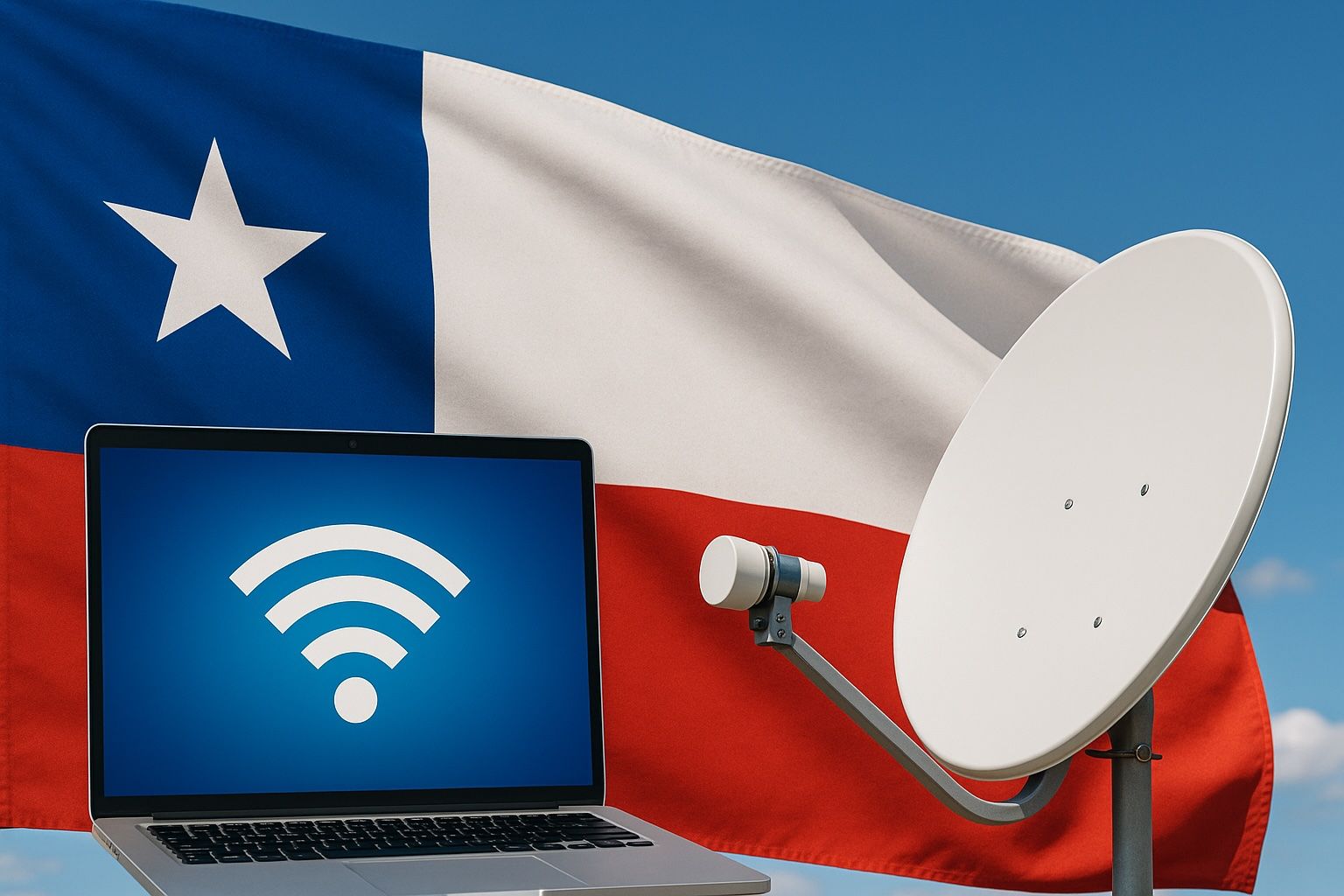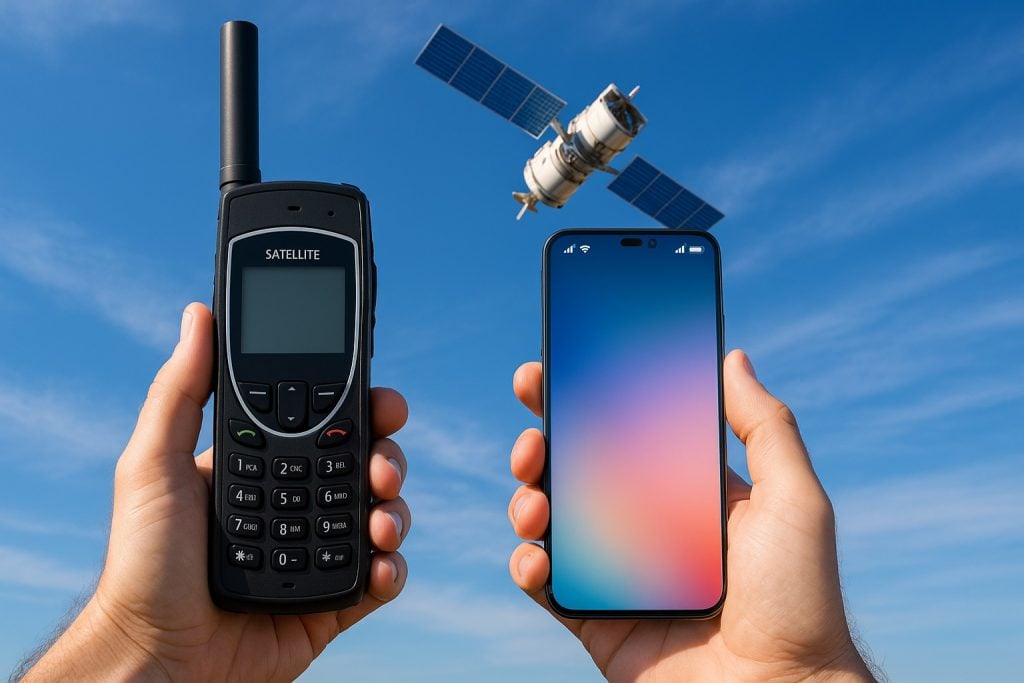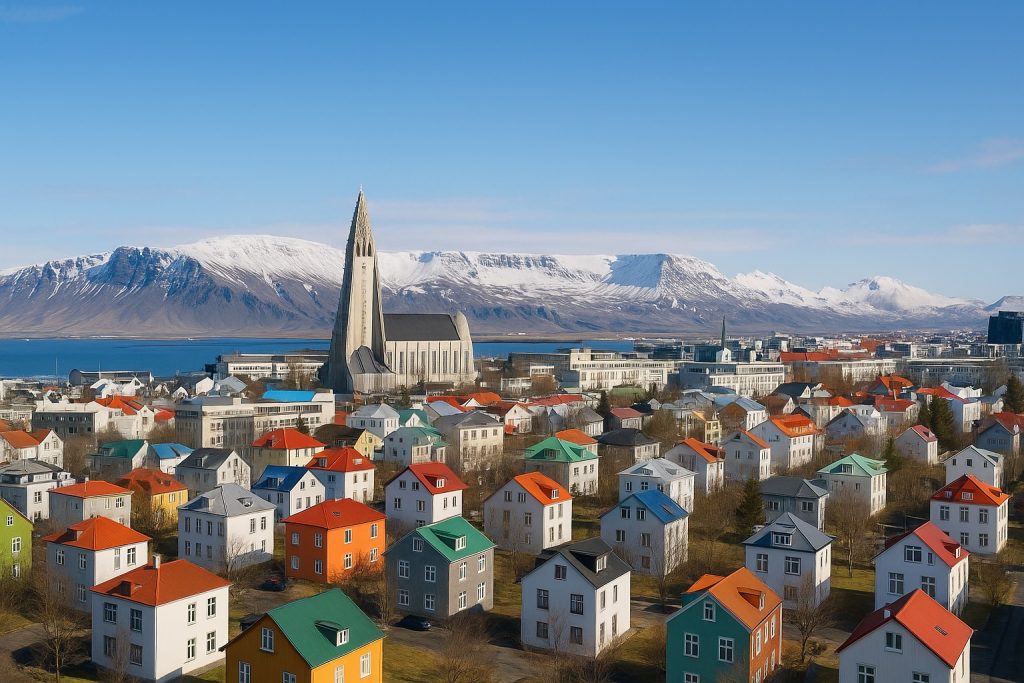- As of early 2024, 96.5% of Chilean households have internet access, up from about 70.2% in 2015.
- Fixed broadband subscriptions reached 4.52 million in 2023, or 22.6 per 100 inhabitants.
- As of late 2023, nearly 70% of fixed connections are fiber-optic (FTTH/B), with copper DSL largely replaced.
- 96.8% of urban households and 94.5% of rural households have internet access, narrowing the urban–rural gap to about 2 percentage points.
- Chile launched 5G in December 2021, and by late 2024 there were over 5.3 million 5G users, with roughly 40% of mobile subscriptions 5G-capable.
- Starlink commands about 58% of Chile’s satellite internet market by early 2025, delivering speeds of 50–150 Mbps and latency of 20–40 ms.
- Starlink residential pricing dropped to about CLP 47,000 per month (~USD 59) with a one-time hardware cost around CLP 430,000.
- Mobile market shares in December 2023 were Entel 34.6%, WOM 25.7%, Movistar 20.9%, and Claro 16.7%.
- Fixed broadband market shares in December 2023 were Movistar 30.7%, VTR 23.9%, Mundo Pacífico 18.4%, GTD 7.0%, Entel 7.1%, and Claro 6.8%.
- In April 2024 Chile passed a law declaring internet access a public telecommunication service to support universal access.
Introduction: Chile has experienced an internet access revolution over the past decade, becoming one of Latin America’s most connected countries. As of early 2024, an astonishing 96.5% of Chilean households have internet access – up from only about 70% in 2015 [1]. This dramatic expansion has been fueled by nationwide infrastructure upgrades, aggressive broadband competition, and forward-looking government policies. Yet behind the headline figures are surprising details about urban–rural gaps, the technologies linking Chile’s remote corners, and the ongoing challenges of affordability and digital inclusion. The following report dives deep into the state of internet access in Chile, uncovering eight key insights – from coverage statistics and technology trends to provider market share, satellite internet growth, pricing, user experience, and government initiatives.
Nationwide Coverage and Internet Penetration
Chile today boasts near-universal internet coverage by regional standards. Internet penetration has climbed to ~90% of individuals and over 94% of households, making Chile a leader in Latin America [2]. In fact, a 2023 survey by the telecom regulator SUBTEL found 94.3% of Chilean households had internet access, up from 79.3% in 2016 [3]. By early 2024 that figure rose even further – 96.5% of households are now online, meaning only 3.5% remain without internet [4]. This is a remarkable jump from just a decade ago. For perspective:
- 2015: ~70.2% of households had internet access [5] (nearly 30% had none).
- 2023: 94.3% of households online [6] – a dramatic improvement.
- 2024: 96.5% of households online [7] (a new record high, with almost all homes connected).
Such growth catapults Chile into the top tier globally for connectivity. A combination of factors enabled this boom: strong economic development, competition among providers, and heavy investments in broadband networks. Fixed broadband subscriptions reached 4.52 million in 2023 (22.6 per 100 inhabitants) [8], while mobile internet subscriptionsexceed the population (over 136% penetration as of 2022) [9] – indicating many users have multiple mobile data accounts or devices. In total, there were about 17.7 million internet users in Chile at the start of 2023, representing ~90% of the population [10].
Notably, Chile’s definition of “internet access” includes any connectivity (fixed, mobile, or even satellite) that a household uses. The near-96% household figure therefore reflects a mix of fixed home broadband and personal mobile internet use. Indeed, over half (55.6%) of Chilean households use both fixed and mobile internet, while a growing segment (26.9%) rely solely on mobile data at home [11]. Thanks to this flexibility, previously disconnected groups have come online via smartphones even if wired broadband isn’t present. The result is that Chile has essentially achieved universal digital access, with connectivity now on par with many developed nations. The remaining gaps are increasingly due to social factors (like digital literacy or affordability) rather than pure infrastructure availability, as discussed later.
Urban vs. Rural Connectivity – A Narrowing Gap
One surprising truth behind Chile’s internet success is how small the urban–rural gap has become. Historically, rural areas lagged far behind cities in connectivity, but mobile broadband and public investments have greatly narrowed this digital divide. As of the latest survey, 96.8% of urban households and 94.5% of rural households have internet access – a difference of only ~2 percentage points [12]. In other words, rural Chile is now almost as connected as its cities, an impressive achievement given Chile’s challenging geography.
Just a few years ago, rural connectivity was much lower. Mobile networks have been the great equalizer: about half of rural households (50.9%) now access the internet via mobile broadband connections [13]. Coverage expansions by cellular operators, including 4G and recently 5G, have brought online many remote communities where laying fiber or cable is difficult. Additionally, targeted programs under the “Brecha Digital Cero” (Zero Digital Divide) plan have funded rural infrastructure and last-mile solutions. These efforts include installing cellular towers in underserved villages and deploying community WiFi hotspots in public areas. For example, the government’s “WiFi ChileGob” initiative operates hundreds of free Wi-Fi zones across all 16 regions, allowing people in plazas and remote towns to get online for 30-minute sessions [14] [15].
Regional data reflect this progress. Virtually every region of Chile shows internet usage above 90% of households. Even in the sparsely populated extreme south (Aysén, Magallanes) and indigenous highlands, connectivity rates have surged thanks to new fiber trunk lines and satellite links (discussed later). The remaining disconnected homes tend to be extremely isolated or face socio-economic barriers rather than lack of signal. In higher-income urban districts, internet access is effectively 100% [16], while even in lower-income or rural areas it now exceeds 90%. Chile has thus managed to bridge the urban–rural digital divide to a degree unmatched by most Latin American countries.
That said, quality of access can still differ. Rural users may have lower speeds on average (often using 3G/4G or satellite), whereas urban users enjoy ultra-fast fiber. We discuss speed and satisfaction more below. But in terms of basic access, Chile’s inclusive connectivity is a standout: remote farmers in Patagonia, miners in the Atacama Desert, and villagers in the Andes now very likely have internet access comparable to Santiago’s city dwellers [17]. This broad reach underscores Chile’s commitment to connecting “todo lugar donde habitan personas” (“every place where people live”) [18].
Access Technologies: Fiber, Mobile Broadband, and More
Chile’s internet backbone is a diverse mix of old and new technologies, with a rapid shift toward modern broadband platforms in recent years. Here’s an overview of the major access technologies connecting Chileans:
- Fiber-Optic Broadband: Fiber has become the dominant fixed broadband technology in Chile. As of late 2023, nearly 70% of all fixed internet connections are fiber-optic (FTTH/B) [19], a share that has grown swiftly each year. Legacy copper DSL lines have largely been replaced by fiber across urban areas, and even many smaller cities now have fiber deployments. The government facilitated this by easing rights-of-way and subsidizing rural fiber backbones (like the Fibra Óptica Austral project bringing fiber to remote Patagonia). The result is Chile now enjoys world-class fixed speeds – the median fixed broadband download speed is ~274 Mbps, ranking 3rd fastest globally [20]. Fiber’s reliability and high throughput have made it the preferred fixed access for consumers and ISPs alike [21].
- Cable (HFC) Broadband: Cable internet over hybrid fiber-coaxial networks (mostly provided by VTR and smaller cable companies) is the second major fixed access method. About 25–27% of fixed connections use cable modem service [22]. These are concentrated in urban areas where cable TV networks existed. Cable broadband in Chile can deliver high speeds (typically 100–500 Mbps), but in the last few years many cable customers have migrated to fiber as it becomes available. Indeed, cable’s share fell from ~35% a few years ago to ~26% now [23]. Still, cable remains important especially in apartment buildings or locales not yet reached by fiber. Operators like VTR have been upgrading networks and even deploying fiber in some zones to stay competitive.
- xDSL (Copper) and Fixed Wireless: Traditional DSL over copper telephone lines has rapidly diminished. Once the main broadband in the 2000s via Telefónica/Movistar, DSL now accounts for only a few percent of connections (largely in areas pending fiber upgrades). Similarly, fixed wireless (e.g. point-to-point radio links or 4G-based home internet) represents a small slice (~2–3%) of the total [24]. Some telcos offer 4G/5G fixed wireless access (FWA) to serve rural homes with no wired option – essentially a router with a mobile SIM. While useful in niches, these are overshadowed by the fiber and cable footprint that covers most populated areas.
- Mobile Broadband (3G/4G/5G): Mobile internet is ubiquitous in Chile and a huge driver of connectivity. As noted, mobile broadband subscriptions are ~137% of the population [25], indicating many Chileans use smartphones or mobile modems for internet. 4G LTE networks cover virtually 100% of populated areas, providing high-speed data to even remote villages. In December 2021, Chile became the first in Latin America to launch 5G mobile service [26]. Since then 5G has expanded rapidly: by March 2024 there were over 4.2 million 5G connections active, a 74% year-over-year increase [27]. By late 2024, 5G users exceeded 5.3 million [28]. This means roughly 40% of mobile subscriptions are already 5G capable, with the rest on 4G [29]. The 5G rollout (led by Entel, Movistar, Claro, WOM) focused on major cities initially, but is reaching smaller towns as spectrum is deployed on lower frequency bands for coverage. Mobile broadband provides a vital backup and complement even for fixed-line customers – over half of households use both fixed and mobile internet in tandem [30]. It also delivers connectivity on the go, with Chileans consuming ever more data via mobile apps, streaming and social media.
- Satellite Internet: For the most remote corners beyond the reach of cellular towers or fiber, satellite steps in as a critical access technology. Chile’s rugged terrain – from isolated Andean villages to Patagonian outposts – means terrestrial networks can’t cover absolutely everyone. In those cases, satellite broadband links homes, schools, and businesses to the world (more on this in a dedicated section below). Historically, satellite in Chile was limited by high cost and slow speeds (using geostationary satellites). But the arrival of low-earth orbit (LEO) systems like Starlink in the past few years has been a game changer, bringing fast, low-latency internet to places that never had viable service before. Chile was actually one of the first countries in the region to approve SpaceX’s Starlink service (in 2021), recognizing its potential for rural connectivity. Today, satellite remains a niche (~1–2%) of total connections but a rapidly growing one [31], as LEO constellations ramp up availability.
In summary, Chile’s broadband ecosystem is now powered by modern, high-speed technologies: Fiber-optics for fixed connectivity and 4G/5G for wireless, with older DSL fading out and satellite emerging as a promising frontier. This tech mix has enabled not just greater coverage but also high quality internet: Chile’s fixed networks routinely deliver multi-hundred Mbps speeds, and mobile networks, while slower, are continually improving (median mobile download ~38 Mbps, still among the faster in LatAm) [32]. The next sections will look at who the major service providers are behind these technologies, and how the market is divided among them.
Major Internet Service Providers and Market Share
Chile’s telecom market is vibrant and competitive, with a mix of legacy incumbents and newer players driving the internet expansion. A few major companies dominate both the fixed and mobile broadband markets, though their rankings have shifted as the industry evolves. Below we break down the top ISPs in Chile and their market shares:
Fixed Broadband Providers: The fixed internet sector (home and business broadband) is led by Movistar (Telefónica Chile) and VTR, followed by several others. Movistar – historically the telephone company – and VTR – the largest cable TV company – together account for over half of all fixed broadband connections [33]. However, challenger ISPs have been rapidly gaining share, especially fiber-focused entrants. According to SUBTEL’s December 2023 data, the market shares for fixed internet were approximately:
| Provider (Fixed Broadband) | Market Share (Dec 2023) |
|---|---|
| Movistar (Telefónica Chile) | 30.7%【16†cursor】 |
| VTR (Liberty Latin America) | 23.9%【16†cursor】 |
| Mundo Pacífico (Grupo Mundo) | 18.4% [34] |
| Grupo GTD (incl. Telsur) | 7.0% [35] |
| Entel (fixed division) | 7.1% [36] |
| Claro (América Móvil) | 6.8% [37] |
| Other regional ISPs | ~6.0% [38] |
Sources: SUBTEL, Dec 2023. Movistar and VTR together hold ~54.6% share [39], but notably Mundo Pacífico– a Chilean fiber ISP – has risen quickly to take over 18% of the market, up from virtually zero a few years ago. Mundo built out fiber in secondary cities and rural towns and is now the third-largest fixed broadband provider. GTD (which owns regional operators like Telsur and Telcoy) focuses on southern Chile and businesses, holding a modest share. Enteland Claro, primarily known as mobile carriers, have also built fixed broadband customer bases (Entel offers fiber and wireless home internet; Claro offers cable and fiber in some areas) [40]. The “Others” category includes local cooperatives and smaller ISPs serving niche markets. Overall, the fixed broadband arena has become more competitive with fiber proliferation – for example, VTR (cable) actually saw a decline of ~3.8% in connections in 2023 as some customers migrated to fiber [41], while Mundo grew over 10% [42].
Mobile Network Operators: The mobile internet market in Chile is served by four main operators, which collectively account for 99% of mobile subscriptions [43]. These are: Entel, WOM, Movistar, and Claro. In recent years, there has been a shake-up – Entel remains the largest, but WOM (a newer entrant launched in 2015) has aggressively gained customers to become the second-largest by subscriptions [44]. As of Q4 2023, the mobile market shares by subscribers were approximately:
| Mobile Operator | Subscriber Share (Dec 2023) |
|---|---|
| Entel | 34.6% [45] |
| WOM | 25.7% [46] |
| Movistar | 20.9% [47] |
| Claro | 16.7% [48] |
| Others (MVNOs, etc.) | ~2% (combined) |
Entel has traditionally led the mobile sector and continues to do so with about one-third of users. WOM’s rapid rise (from 0 to ~25% share in under a decade) was driven by aggressive pricing and marketing, helping to lower mobile data costs industry-wide. Movistar and Claro have slightly smaller shares after ceding ground to WOM, but each still serves a significant portion (around 5–6 million subscribers each). A handful of MVNOs (Mobile Virtual Network Operators)like Virgin Mobile exist, but their collective share is only a couple of percent.
In terms of revenue and network investment, Entel, Movistar, and Claro were the long-time dominant trio, but WOM’s disruption has made it a strong fourth player. All four have launched 5G and compete on coverage and speed. Notably, mobile competition has directly benefited consumers – by 2024 Chile had some of the lowest mobile data prices in Latin America (as we’ll detail in a later section on pricing).
Market Trends: The fixed and mobile markets are somewhat converging, as mobile operators bundle home internet and fixed ISPs offer mobile services via MVNO arrangements. The competition has spurred innovation (e.g., unlimited mobile data plans, fiber + mobile bundles) and kept prices comparatively affordable for users. Chile’s regulator SUBTEL keeps a close eye on market concentration; so far, there are multiple viable providers in each segment ensuring no monopoly control. The presence of global telecom groups (Telefónica, América Móvil, Liberty) alongside local players (Entel, WOM’s parent Novator, GTD, Mundo) creates a dynamic market with investment coming from both foreign and domestic sources.
Looking ahead, market shares may continue shifting as fiber deployment opens opportunities for smaller ISPs in new areas, and as 5G rollouts potentially shuffle the mobile rankings (e.g. WOM and Entel acquired prime 5G spectrum and could lure more customers on network quality). But for now, Chileans enjoy the fruits of a competitive landscape: multiple choices for internet service in most areas and improving service quality.
Satellite Internet in Chile: Starlink and the New Space Race
When it comes to reaching Chile’s most isolated regions, satellite internet has emerged as a game-changer. In fact, Chile is witnessing a mini space race in connectivity, led by Elon Musk’s Starlink service which has taken the country by storm. Here’s an overview of satellite internet availability, providers, performance, and adoption in Chile:
- Starlink’s Rapid Rise: Starlink (SpaceX’s LEO satellite constellation) began serving Chile in mid-2021, initially in pilot programs connecting remote communities. Since then, its growth has been explosive. By early 2025, Starlink commands an estimated 58% of Chile’s satellite internet market share, essentially dominating this segment in just 3 years [49]. The service has been crucial for rural and hard-to-reach areas, from Patagonia to the Altiplano, where traditional networks don’t reach [50]. Starlink’s key advantage is high speed (50–150 Mbps or more) with relatively low latency (~20–40 ms), making it capable of supporting video streaming, VPNs, and other modern internet usage that old satellite links struggled with. Its user base in Chile grew 81.4% in the last year alone [51], far outpacing any other ISP. This surge was helped by Starlink slashing its prices: initially about USD $100 per month with expensive equipment, the monthly fee was cut nearly in half. As of 2022–2023, Starlink’s residential plan in Chile costs CLP $47,000 per month (~USD $59) – down from CLP $92,000 at launch [52]. The one-time hardware cost (dish + router) also dropped to around CLP $430,000 ($500) with occasional promotions [53]. These price reductions, unique to Chile and a few other markets, have made Starlink far more accessible to everyday consumers and small businesses in remote zones.
- HughesNet and Geostationary Providers: Prior to Starlink, HughesNet was a major satellite internet option in Chile. HughesNet, using geostationary satellites, launched service in Chile around 2019 and can technically reach 98% of the country [54]. It offers plans targeted at rural homes and SMEs, but these come with data caps and lower speeds (typically 10–50 Mbps). For example, HughesNet’s residential packages provide 40 GB or 80 GB of data for roughly CLP $41,000–54,000 per month [55], with additional off-peak data allowances [56]. Small business plans go up to ~125–200 GB for ~$90,000 CLP/month [57]. While HughesNet covers areas with no other service, users must manage their data usage and endure higher latency (~600 ms), which affects real-time applications. Other geostationary satellites (e.g., Viasat or regional providers) have also offered niche services, but none achieved mass adoption in Chile due to cost-performance limitations.
- Performance and Use Cases: Satellite internet in Chile is largely about connecting the unconnected – rural schools, village community centers, research stations, and rural homes/farms. With Starlink, many such users are experiencing broadband for the first time, enabling remote education, telemedicine, e-commerce, and entertainment. Speeds on Starlink often reach 100–200 Mbps in Chilean rural tests, a night-and-day difference compared to previous 5 Mbps satellite links or slow DSL that some remote towns had. During natural disasters, satellites also provide backup: e.g., after wildfires or floods that damaged cell towers, authorities have used satellite units to restore communications. The downside remains cost – even at ~$50–60 per month, that can be high for low-income rural families (though sometimes community organizations or local governments subsidize it). Starlink’s equipment also requires a clear view of the sky and power source, which can be a hurdle in some off-grid locations.
- Availability: Starlink is currently available across virtually all of Chile’s territory, from the northern border to Tierra del Fuego, as the Starlink satellite coverage is global and Chile’s regulatory clearance allows nationwide use. Early deployments even included remote indigenous villages and the world’s southernmost town, Puerto Williams, demonstrating its reach. HughesNet similarly advertises ~98% geographic coverage [58], basically anywhere the satellite footprint covers (which is all of Chile except maybe deep valley shadows). In practice, as long as a user can install a small dish and has electricity, they can get online via satellite. This has huge implications for Chile’s goal of “no citizen left offline” – satellite is plugging the last gaps where terrain or low population density make other solutions impractical.
- Adoption Trends: While satellite users are still a minority, the growth rate is very high (Starlink’s 81% annual customer growth far exceeds any terrestrial ISP [59]). SUBTEL noted a 72.7% increase in satellite connections in one year as of late 2024 [60]. This likely corresponds to thousands of new users adopting Starlink or Hughes in rural areas. Additionally, telecom companies have begun to integrate satellite offerings: for example, Entel partnered with Starlink in 2025 to resell Starlink Business service to enterprise and government clients in remote industries (mining, forestry, etc.) [61] [62]. Such partnerships will further boost adoption by bundling satellite with traditional services. It’s clear that satellite internet – once a last resort – is now a vital component of Chile’s connectivity landscape, ensuring that even the far-flung corners (mountain hamlets, research observatories, border checkpoints, etc.) can access high-speed internet.
In summary, Starlink has revolutionized satellite internet in Chile, seizing majority market share and delivering performance previously unheard of via satellite. Traditional providers like HughesNet continue to serve rural customers as well, especially where moderate speeds are sufficient or costs need to be lower at small data volumes. The competition even in the skies has benefited users as prices come down. Chile’s experience shows that LEO satellite broadband can effectively complement terrestrial networks to achieve near-total connectivity. As more satellites launch and capacity increases, we can expect satellite internet to become even more affordable and widely used for Chile’s digital inclusion goals.
Pricing Trends and Consumer Affordability
Despite the high quality of internet service in Chile, consumers enjoy relatively affordable prices compared to regional and global standards. A combination of competition and smart regulation has driven costs down over time, making internet access more attainable for the average Chilean household. Here are the key points on pricing and affordability:
- Broadband Prices – Lowest in Latin America: Chile has been highlighted in studies as having some of the cheapest broadband in Latin America. In 2023, an international analysis by Electronics Hub found that the average fixed broadband package in Chile costs about $25.5 USD per month, significantly below the South American average (~$38.5) [63] [64]. This places Chile among the most affordable countries globally in terms of internet cost relative to income. The same study noted Chile’s cost per megabit is around $0.04 per Mbps, indicating consumers get a lot of speed for the price [65]. By comparison, in many neighboring countries users pay higher rates for slower connections. The entry-level fiber and cable plans in Chile (often 100 Mbps or 200 Mbps) can be found for as low as CLP $15,000–20,000 (USD $18–25) per month during promotions, which is extremely competitive.
- Mobile Data Costs: Mobile internet is also very affordable in Chile. That Electronics Hub study showed that 10 GB of mobile data costs only about 0.69% of the average monthly income in Chile [66] – one of the best affordability ratios in the world (surpassing even many European countries). This is largely due to the price war sparked by WOM’s market entry and regulatory policies like eliminating extra charges for number portability and fostering MVNOs. Unlimited data plans or very large data bundles are available at reasonable prices (e.g., some operators offer ~100 GB for CLP $10,000–15,000). Prepaid data is also cheap per GB. As a result, cost is rarely a barrier to basic mobile internet usage; even low-income users can typically afford some data package.
- Pricing Trends: Over the past 5–10 years, the trend has been steadily downward in price per bit, while advertised speeds have increased. For instance, a decade ago a 10 Mbps home DSL plan might have cost $30; today that same price might get you 300 Mbps on fiber. According to market reports, broadband ARPU (average revenue per user) in Chile has declined or remained flat even as usage grows, indicating better value for consumers. The presence of multiple ISPs in most cities means providers often run promotions: free installation, the first few months at a discount, or bundling TV/phone service at a combined rate. Seasonal sales and regional subsidies (for example, lower prices in rural regions with government support) also help keep costs accessible. In some remote areas, the government has even funded free community internet centers or Wi-Fi (so those who can’t pay still have some access).
- Satellite and Niche Service Costs: One area where cost was historically an issue is satellite internet – as mentioned, older satellite plans were expensive (CLP $50,000+ for limited data). But even here, Starlink’s entry forced prices down. Starlink at ~$60/month unlimited is a breakthrough for rural users who used to pay similar amounts for a fraction of the service. For comparison, a high-end HughesNet plan with 200 GB data is ~CLP $93,000 ($110) [67], so Starlink undercut that with better performance. We are seeing a trend of improving affordability even for specialized connectivity.
- Income and Regional Disparities: While Chile leads on average affordability, it’s important to note that for some low-income households, internet cost can still strain budgets. The government measures the portion of income spent on telecom, and has recognized that for the poorest deciles, even a $15/month plan may be burdensome. To address this, Chile has considered implementing a “social tariff” or subsidized internet plan for low-income families. Additionally, public libraries and telecenters offer free internet access points. According to the 2023 CADEM survey, among the few households still without internet, cost was cited by about 15% as a reason for not having service (though the primary reasons were lack of knowledge or perceived need) [68]. This suggests affordability, while generally good, can be further improved at the margins.
- International Bandwidth and Pricing: Chile’s extensive connectivity to multiple submarine cables (such as the Google Curie and others [69]) has lowered the wholesale cost of bandwidth, which in turn helps keep retail prices low. There is ample international capacity, so ISPs can provide unlimited data plans without throttling, a fact reflected in the prevalence of uncapped offers. Unlike some countries, data caps on fixed broadband are virtually nonexistent in Chile’s consumer plans (except satellite), which provides better value and consumer confidence to use services freely.
In conclusion, internet access in Chile is not just widespread, but also affordable relative to incomes, especially in comparison to regional peers. Average Chilean consumers spend a modest share of their earnings for quality connectivity – a testament to the benefits of competition and policy emphasis on digital inclusion. Ongoing efforts aim to make it truly universal by helping the remaining low-income or remote users through subsidies or community access programs. Overall, Chile’s pricing environment supports continued growth in usage and ensures that the impressive coverage stats are matched by real accessibility for its people.
User Experience: Speeds, Satisfaction, and Usage Patterns
Chilean internet users generally enjoy an excellent experience by global standards, particularly on fixed broadband. Thanks to the prevalence of fiber and robust networks, Chile’s internet speeds are among the fastest in the world, and user engagement with online services is very high. However, there are still areas to improve in terms of quality consistency and digital skills. Let’s examine the state of user satisfaction, speeds, and behavior:
- World-Class Connection Speeds: On the whole, Chile offers top-tier speeds to users with access. The country’s fixed broadband speeds rank in the global top 5. As of May 2024, Chile’s median fixed download speed was about 274.5 Mbps, with 185 Mbps upload, placing it 3rd out of 181 countries tested [70]. These speeds reflect the extensive fiber coverage and modern cable systems. Even many home users on mid-tier plans get 100–300 Mbps, which enables smooth streaming, video conferencing, and gaming experiences. On mobile, speeds are more modest but improving: median mobile download was ~38.3 Mbps (upload ~13.4 Mbps) as of mid-2024 [71]. This ranked ~71st globally – not bad, but Chile’s mobile speeds lag its fixed performance. The 5G rollout is expected to boost mobile speeds significantly; early 5G users often see 100–200 Mbps on their phones under good coverage. Chile’s carriers are actively expanding 5G to raise the mobile internet quality closer to the fiber experience.
- User Satisfaction and Quality: High speeds have translated into fairly high satisfaction among Chilean internet users, although exact survey metrics are hard to quantify. One proxy is that most Chileans use the internet heavily and regularly, indicating the service meets their needs. In the 2023 national survey, 89.7% of internet users reported going online every day [72], and over half (52%) spend more than 4 hours online per day [73]. This heavy usage suggests people find their connections reliable enough for daily work, study, entertainment, and socializing. Furthermore, Chile has implemented strong consumer protection and quality monitoring – SUBTEL even introduced a new Internet QoS measurement system to transparently track speeds and service quality by provider [74]. This regulatory pressure means ISPs generally deliver the advertised speeds and have to compensate users for prolonged outages or subpar service, contributing to better user experiences. That said, there are occasional pain points: for example, VTR has historically had customer complaints about network congestion or downtime in some areas (especially before fiber upgrades). The regulator fined some ISPs in the past for not meeting minimum speed commitments. Overall, though, Chilean ISPs rank relatively well in customer satisfaction compared to regional counterparts, with increasing competition forcing improvements in customer service.
- Usage Patterns – Devices and Activities: Chileans have embraced the internet across all aspects of life. Mobile devices are king – an astounding 98.9% of users access the internet via smartphone [75] (one of the highest rates globally), as virtually everyone has a data-capable phone. In homes, other devices are common too: Smart TVs (73.4% of households) and laptops (57.3%) are major means of access [76], reflecting the popularity of streaming video and remote work/learning. Traditional PCs and tablets are used less (around 23% each) [77], but still present. The most cited reasons Chileans value internet access underscore communication and information needs – 69.8% say they need it to communicate (messaging, social media) and 57% to get information [78]. E-commerce, online banking, and e-government services are also widely used, especially after the pandemic accelerated digital adoption. By 2025, more than 60% of Chileans were shopping online and accessing government services via the internet, a sign of trust in digital platforms.
- Remaining Challenges: Despite the rosy picture, some user segments face challenges. The 3.5% of households still offline are mostly due to non-technical reasons: in a survey of those without internet, 31.4% said they don’t know how to use computers or smartphones, 24.1% said they don’t see the benefits of internet, and 17% simply don’t know how to get connected [79]. These responses highlight that digital literacy and awareness are the last-mile hurdles. The government and NGOs are addressing this by offering digital skills training, especially for older adults and rural residents. Indeed, internet usage among senior-only households is lower – only ~82.9% of households composed solely of elderly people have internet [80], compared to 99%+ of those with school-aged kids or working-age adults [81]. This suggests a generational gap in usage. User satisfaction thus isn’t just about the network working well, but ensuring people have the skills and motivation to use it. Chile’s efforts like training programs under SENCE and community tech hubs aim to improve this, so that having access translates to meaningful use.
- Content and Censorship: Another aspect of user experience is the open internet environment. Chile generally scores highly on internet freedom – there is no pervasive censorship of content and users can access social media, news, and entertainment freely. This openness likely contributes to satisfaction, as Chileans can partake in the global internet without major restrictions. Chile was even one of the first countries to enact a “net neutrality” law (in 2010) guaranteeing that ISPs cannot arbitrarily block or throttle lawful content. This regulatory stance ensures users get the full benefits of their bandwidth across all applications, further enhancing the user experience.
In summary, Chilean internet users benefit from fast, reliable connections that they use intensely for daily life. Satisfaction levels appear strong, although continued work on digital inclusion (for the elderly, less educated, or currently offline) is needed to ensure everyone can take advantage. As the country continues to upgrade mobile networks and extend fiber deeper, urban and rural users alike should see further improvements in speed and quality. Chile’s case demonstrates that near-universal access coupled with high service standards can truly transform how a society communicates and functions in the digital age.
Government Policies and Digital Inclusion Programs
Chile’s impressive internet landscape did not happen by accident – it has been supported by proactive government policies and national programs aimed at expanding and democratizing digital access. Successive administrations have treated telecom infrastructure as a strategic priority, and recent initiatives continue this push, targeting the elimination of the digital divide entirely. Key policies and programs include:
- Internet as a Public Service: In April 2024, Chile’s National Congress passed a landmark law declaring internet access a public telecommunication service that must be available to all citizens [82]. This essentially elevates the internet to the status of an essential utility, akin to water or electricity. The legislation is part of Chile’s plan to “eliminate the digital divide” and ensures the government has a clear mandate (and authority) to intervene in expanding access where market forces fall short. With internet officially a public service, regulators can more easily enforce universal service obligations, require companies to serve rural areas, and invest public funds in connectivity projects.
- Plan Brecha Digital Cero (2022–2025): Launched in May 2022, the “Zero Digital Gap Plan” is Chile’s comprehensive roadmap to achieve 100% connectivity. It consists of four pillars: 1) Regulatory measures for connectivity (like streamlined permits, spectrum allocation for rural telephony, and net neutrality enforcement); 2) Digital Infrastructure expansion (funding fiber backbone, rural cell towers, satellite links); 3) Legislative projects(the above-mentioned public service law, strengthening cybersecurity and data protection laws to boost trust); and 4) Last-mile connectivity initiatives to reach every corner of the country [83] [84]. An emphasis is on “zonas rojas” – red zones or underserved areas – including poor urban neighborhoods and remote rural locales that were historically marginalized [85]. The plan provides direct subsidies to telecom operators to build networks in these zones and also addresses issues like cable theft (a big problem in some areas) through coordinated efforts with municipalities [86]. The ultimate goal of Brecha Digital Cero is that no matter one’s economic status or location, they can get online [87]. Early results are positive – as we saw, the share of unconnected homes plunged to 3.5%, and many rural communities got online for the first time during this period.
- Public Wi-Fi and Community Access: The Chilean government has a longstanding program to provide free Wi-Fi hotspots in public spaces. The “WiFi ChileGob” network (sometimes called Zona WiFi or ChileGob) offers free internet access in hundreds of locations nationwide [88]. As of a few years ago, there were over 668 free Wi-Fi access points in 153 communes across all regions [89]. These are often installed in town squares, libraries, schools, and public transport hubs. Users can connect for a certain duration (e.g. 30 minutes per session [90] [91]) and then reconnect as needed. This program is crucial for those who cannot afford home service or devices – it gives them a way to get online for basic needs. Additionally, many municipalities have telecenters or digital infocenters where residents can use computers with internet for free. During the pandemic, some local governments parked “Wi-Fi vans” in remote villages to beam connectivity for online schooling. All these efforts form a safety net ensuring even the most disadvantaged have at least some access.
- Rural Coverage Projects: Through the Telecom Development Fund (FDT) and other schemes, Chile has co-financed infrastructure in rural and low-income areas. One flagship was the Fibra Óptica Austral (FOA) project – a 4,500 km fiber backbone extending to Chile’s southernmost regions (Los Lagos, Aysén, Magallanes). Completed around 2020, FOA was a ~$100 million public-private project (with about 64 billion pesos in subsidies) that now delivers high-speed backhaul to isolated Patagonian communities [92]. Thanks to FOA, towns like Puerto Williams and Caleta Tortel got broadband links where previously only expensive satellite existed [93]. Another ongoing project is Fibra Óptica Nacional, expanding fiber highways throughout the country’s interior to improve redundancy and regional connectivity. On the wireless side, Chile’s regulator has required mobile operators to cover rural localities as part of spectrum license obligations – thousands of rural 4G towers have been built this way. Also, the state funded rural cell sites (often solar-powered) to bring voice and data to villages that lacked any signal. The Last Mile Connectivity projects under Brecha Digital Cero specifically target about 1,000 remote communities for new coverage via a mix of fiber, microwave relay, and satellite links, ensuring truly every populated location has at least one broadband option.
- Digital Skills and Inclusion: Recognizing that access alone isn’t enough, Chile has programs to boost digital literacy. For example, the Vive Digital and Biblioredes initiatives (through libraries) offer courses on basic computer and internet use for adults. The Ministry of Education integrated digital skills in school curricula, and there are programs to provide devices (like tablets or laptops) to students from low-income families. A pilot called “Brecha Digital Cero – Sence” in La Araucanía region provided free connectivity and training to indigenous women entrepreneurs to help them leverage e-commerce [94]. Chile’s approach to inclusion also covers accessibility – efforts to ensure websites and services are accessible to people with disabilities, and encouraging local content in Spanish and indigenous languages to make the internet relevant to all communities. These “soft” inclusion measures complement the hard infrastructure.
- Regulatory Environment: Chile’s telecom regulator SUBTEL has been fairly advanced in policy. Chile was one of the first to implement Number Portability (making it easy to switch mobile providers) and Infrastructure Sharing rules (to lower deployment costs). Spectrum auctions for 4G and 5G were designed to maximize coverage – e.g., operators had to deploy a certain number of 5G base stations in each region, not just Santiago. There’s also a Universal Service fund that compensates operators for running services in uneconomical areas. Meanwhile, Chile’s laws ensure an open internet (net neutrality) and strong privacy protections (with a new Personal Data Protection Act passed in 2024 establishing an independent data protection agency) [95] [96]. All these create a user-centric framework where expanding access and protecting users’ rights are top priorities.
In essence, Chile’s government has taken an active, multifaceted role in fostering a digital society. By treating internet as essential, investing in infrastructure, subsidizing gaps, and building human capital, Chile has built the foundations for universal connectivity. The pay-off is visible in the statistics we’ve discussed. Of course, the job is never fully done – the final few percent of access and full digital literacy are ongoing efforts. But Chile’s policy environment is widely seen as a model in the region, often cited as the reason Chile leads in ICT indicators. As the country looks toward future goals (like a “Chile Digital 2035” strategy covering AI, IoT and next-gen networks [97]), the strong baseline of near-ubiquitous internet access will be a vital enabler for economic growth, education, and innovation.
Conclusion: Chile’s journey to 96% internet coverage is a standout success story, driven by massive fiber deployment, competitive mobile broadband, visionary policies, and inclusive programs. In a relatively short time, Chile has transformed into one of the Western Hemisphere’s most connected nations. Urban and rural communities alike are now online, enjoying high speeds at reasonable costs. The remaining challenges – reaching the last isolated spots, upskilling those unfamiliar with technology, and keeping services affordable – are actively being tackled through the initiatives described. Chile’s experience shows that with the right mix of market dynamics and public support, the digital divide can truly be closed. As Chile continues to push the envelope with 5G, satellite expansion, and perhaps future 6G or fiber-to-every-village ambitions, it stands as a testament to what a coordinated national effort can achieve in internet accessibility. The rest of Latin America (and the world) has much to learn from Chile’s internet revolution – a revolution that has effectively made internet access a near-universal reality in the country.
References
1. www.litoralpress.cl, 2. freedomhouse.org, 3. freedomhouse.org, 4. www.litoralpress.cl, 5. www.litoralpress.cl, 6. www.litoralpress.cl, 7. www.litoralpress.cl, 8. www.subtel.gob.cl, 9. en.wikipedia.org, 10. datareportal.com, 11. techtegia.com, 12. www.litoralpress.cl, 13. www.subtel.gob.cl, 14. www.wifigob.cl, 15. www.interior.gob.cl, 16. www.litoralpress.cl, 17. techtegia.com, 18. www.subtel.gob.cl, 19. www.soychile.cl, 20. freedomhouse.org, 21. techtegia.com, 22. www.subtel.gob.cl, 23. www.subtel.gob.cl, 24. www.subtel.gob.cl, 25. en.wikipedia.org, 26. freedomhouse.org, 27. freedomhouse.org, 28. www.soychile.cl, 29. techtegia.com, 30. techtegia.com, 31. www.soychile.cl, 32. freedomhouse.org, 33. www.subtel.gob.cl, 34. www.subtel.gob.cl, 35. www.subtel.gob.cl, 36. www.subtel.gob.cl, 37. www.subtel.gob.cl, 38. www.subtel.gob.cl, 39. www.subtel.gob.cl, 40. www.subtel.gob.cl, 41. www.subtel.gob.cl, 42. www.subtel.gob.cl, 43. www.subtel.gob.cl, 44. www.subtel.gob.cl, 45. www.subtel.gob.cl, 46. www.subtel.gob.cl, 47. www.subtel.gob.cl, 48. www.subtel.gob.cl, 49. www.ex-ante.cl, 50. www.ex-ante.cl, 51. www.ex-ante.cl, 52. www.tarreo.com, 53. www.tarreo.com, 54. www.europe.hughes.com, 55. comparaiso.cl, 56. comparaiso.cl, 57. comparaiso.cl, 58. www.europe.hughes.com, 59. www.ex-ante.cl, 60. www.soychile.cl, 61. www.towerxchange.com, 62. www.towerxchange.com, 63. chocale.cl, 64. chocale.cl, 65. chocale.cl, 66. chocale.cl, 67. comparaiso.cl, 68. techtegia.com, 69. en.wikipedia.org, 70. freedomhouse.org, 71. freedomhouse.org, 72. techtegia.com, 73. techtegia.com, 74. medux.com, 75. techtegia.com, 76. techtegia.com, 77. techtegia.com, 78. www.subtel.gob.cl, 79. techtegia.com, 80. www.litoralpress.cl, 81. techtegia.com, 82. freedomhouse.org, 83. cooperativa.cl, 84. cooperativa.cl, 85. cooperativa.cl, 86. cooperativa.cl, 87. cooperativa.cl, 88. interluz.cl, 89. interluz.cl, 90. www.wifigob.cl, 91. www.interior.gob.cl, 92. developingtelecoms.com, 93. foa.subtel.gob.cl, 94. sence.gob.cl, 95. freedomhouse.org, 96. freedomhouse.org, 97. www.bnamericas.com










